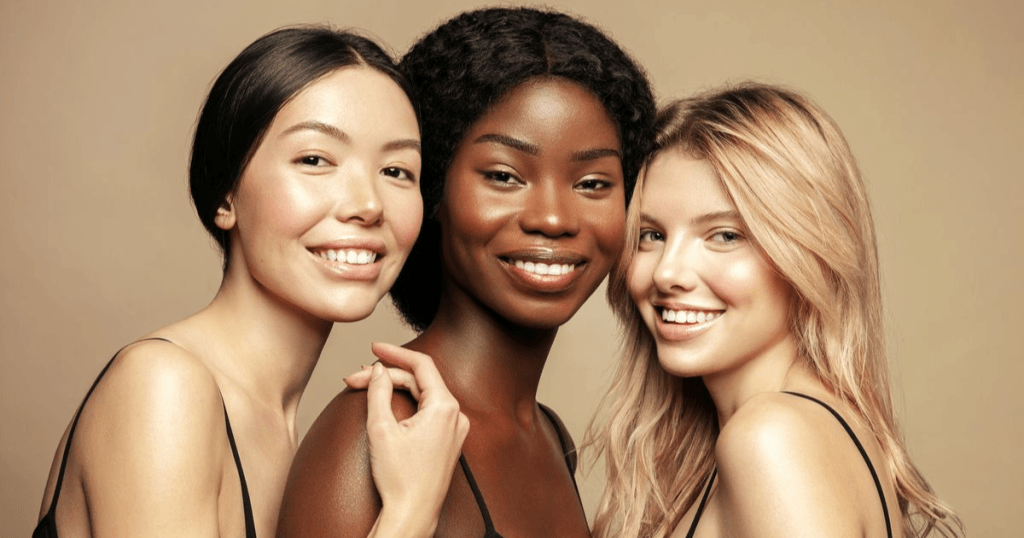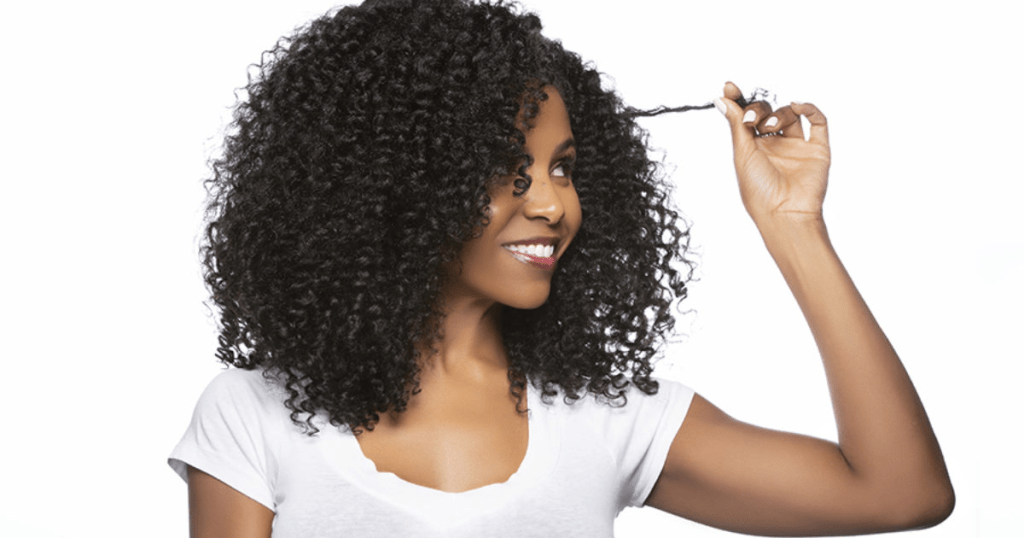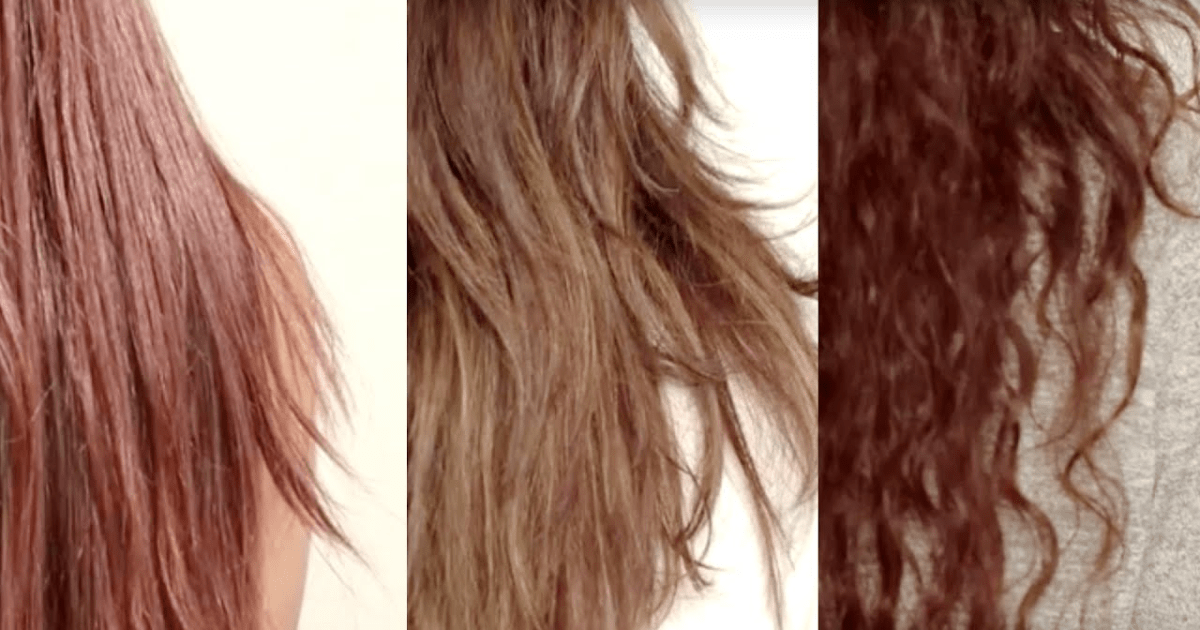Have you ever found yourself questioning the nature of your hair? You’ve spent hours analyzing its structure and wondering if there’s more to it than meets the eye. Well, you are not alone. Their straight hair may have hidden waves. In this exploration, we’ll explore hair texture and help you discover if your straight hair can be wavy.
Picture this: You’re standing in front of the mirror, comb in hand, marveling at your sleek locks. But then, as you study them further, a subtle question emerges: is my straight hair actually wavy ?” It is like uncovering a hidden treasure waiting to be discovered. You can’t help but wonder if a touch of wavy magic lurks in your strands. Well, my friends, prepare to embark on a hair adventure that may reveal the unexpected.
Hair is an intricate and fascinating feature of our physical appearance. We often categorize it into different types—straight, wavy, curly, or coily—based on its natural pattern. At the same time, curls and coils are easy to identify. Sometimes, it’s hard to tell whether our hair is straight or wavy, making us question its true nature. Wavy hair bends or waves slightly, especially when air-dried. If your hair looks straight when wet but becomes wavy as it dries, you likely have a combination of straight and wavy hair.
Understanding Hair Types
Hair types play an important role in defining our style and appearance. All hair types have distinct characteristics: straight, wavy, curly, or coily. These properties contribute to the appearance and behavior of hair. This section will examine different hair types, focusing on straight, wavy, curly, and curly hair.
Understanding the differences between hair types provides valuable insight into your hair.

Appreciating Straight, Wavy, Curly, And Coily Hair
Straight Hair: It is famous for its smooth and sleek appearance. Round hair shafts lie flat against the scalp, creating a straight, sleek look. This hair type reflects light well, giving it a glossy quality. Straight hair is easy to manage and offers versatility in styling.
Wavy Hair: Wavy hair has a slight twist or wave pattern. Wavy hair falls between straight and curly and has loose waves. Waves add volume and texture to the look. Wavy hair can vary in severity for some individuals. Having subtle waves, while others have more pronounced waves. The structure and shape of waves can vary from person to person. But the commonality lies in the lighter hair that sets wavy hair apart.
Curly Hair: Curly hair exhibits well-defined curls or spirals. The hair shaft is more oval or oval, causing the hair to grow in a curved or wave pattern. Curly hair can range from loose curls to tight coils and often has a natural bounce and texture. The unique texture of curly hair makes it prone to dryness and frizz. It requires special care and styling techniques.
Coily Hair: Kinky or Afro-textured hair is characterized by coiled or zigzag-shaped strands. Hair shafts are flat and full, creating a voluminous and dense appearance. Coiled hair has a higher shrinkage factor, meaning it appears shorter when dry. This hair type requires special care to retain moisture and prevent breakage.

Understanding hair types is crucial to identifying your actual hair type. Each hair type has unique characteristics and patterns.
Hair texture can change over time due to various factors. These factors include hormonal changes, environmental influences, and hair care practices.
The Science of Hair
Understanding hair science involves studying the texture and structure of our hair. The three main layers of the hair are the cuticle, the cortex, and the medulla. The cuticle, which consists of overlapping scales, protects the inner layers. Straight Hair: Flat, aligned cuticle scales for a smooth appearance. Wavy, Curly, and Curly Hair: Raised or shaped cuticle scales for a unique texture.
The cortex, which makes up most of the hair shaft, is underneath the cuticle. The cortex contains keratin protein chains that give hair strength, elasticity, and color. In straight hair, the attached parallel protein chains create a better shape. The cortex of wavy, curly, and curly hair twists or twists the protein chains. These result in waves, curls, and coils. The innermost layer, the medulla, is a soft, spongy region that may or may not be present in all hair types.
Genetics also play an essential role in determining our hair type. Inherited genes influence the shape, texture, and growth of our hair. Specific genes control the production of proteins and enzymes that contribute to the structure and properties of hair. It understands hair structure and genetics. This allows us to know the types of hair and so on.
Identification Of Hidden Waves In Straight Hair
Is my straight hair actually wavy? Discovering the hidden waves in straight hair can be an exciting revelation. Hidden waves can often surprise people with straight hair. Hidden beneath the smooth appearance of straight hair, subtle signs point to unknown waves. One of the most common indicators is a change in texture when wet. Straight hair may look sleek when wet, but when it dries, waves emerge, revealing its true nature. Water thins hair, showing hidden waves.
Natural undulations can show hidden waves in straight hair. Upon closer inspection, you may notice a slight bend in the edges. These twists are more noticeable towards the ends of the hair. These undulations indicate a hidden wavy texture in straight hair.
How your hair responds to styling techniques reveals its true nature. Specific techniques can provide insight into hidden waves in straight hair. For example, when braiding or curling damp straight hair and releasing the style when dry, well-defined waves or curls may form, indicating the presence of hidden waves.
Caring For And Styling Wavy Hair
Wavy hair has a natural charm and versatility, allowing for a wide range of styling options. However, wavy hair has specific maintenance requirements. These requirements are necessary to maintain its health. They also help enhance its unique texture. This section will explore practical tips and techniques for caring for and styling wavy hair, empowering you to embrace and accentuate its natural beauty.
Hair Care Tips For Wavy Hair
Moisture is key: Wavy hair is more prone to dryness, so it’s essential to focus on hydration. Use a moisturizing shampoo and conditioner formulated for wavy hair. Look for products that contain nutrients like shea butter or argan oil. They help retain moisture and cut frizz.
Gentle Cleansing: Avoid over-washing your wavy hair. It can strip away natural oils and cause dryness. Aim to wash your hair every 2-3 days or as needed. Consider using a sulfate-free shampoo to avoid excessive drying. Massage your hair while brushing to preserve the wave pattern.
Conditioning is essential: Maintaining moisture balance and cutting tangles are crucial for wavy hair. Apply conditioner from mid-lengths to ends, focusing on areas prone to dandruff. Consider using a weekly leave-in conditioner or deep conditioning treatment for extra hydration and nourishment.
Comb with care: Use a wide-toothed comb or detangling brush to comb through your wavy hair when wet. When combing wavy hair, start at the ends and work your way down. This helps prevent breakage and preserves the natural wave pattern. Avoid brushing your hair when dry to prevent frizz and maintain the integrity of the waves.
Embrace air drying: Wavy hair responds well to air drying. After washing your hair, squeeze out excess water with a microfiber towel or an old T-shirt. Avoid rubbing or towel drying, as this can disturb the waves and cause frizz. Let your hair air dry naturally to enhance the natural wave style.
Styling products for definition: Consider using styling products designed for wavy hair. Mousse, cream, or gel can help enhance natural texture and keep waves in place. Apply the product through wet hair, scrunching to encourage wave formation.
Protective hairstyles: Choose protective hairstyles that minimize manipulation. This helps preserve the wave pattern. Styles like braids, twists, or buns can protect your hair from environmental damage. They reduce friction, allowing your waves to hold their shape for longer.
Bedtime maintenance: Before bed, tie your hair in a pineapple or loose bun to secure the waves overnight. You can also sleep on a silk or satin pillowcase to reduce friction and prevent wrinkles.
Frequently Asked Questions
How do you know if you have wavy hair?
Signs of wavy hair include wet waves, natural undulations, and the ability to create waves or curls with styling techniques.
Is wavy or straight hair sexier?
Concepts of attraction vary. Wavy and straight hair is attractive based on personal preference.
Why is my hair a mix of straight and wavy?
Hair texture varies due to genetics and hair follicle shapes, resulting in a mixture of straight and wavy hair.
Can straight hair be curly?
Although rare, straight hair can become curly due to hormonal changes, health conditions, or environmental factors.
Conclusion
If you’ve ever wondered, “Is my straight hair actually wavy ?” you’re not alone. Many people discover hidden waves in their straight hair, and there are a few key signs to look out for. One clue is when your hair appears wavy when it’s wet. You may notice that those waves become more visible as your hair dries. It’s like a secret waiting to be unlocked! Another indicator is the presence of natural undulations. Take a closer look at your hair, especially towards the ends. You might spot gentle bends or subtle waves that you never noticed before.
Your hair’s response to styling techniques can reveal its true nature. If you braid or twist your damp hair and release the style when it’s dry, you may find well-defined waves or curls forming. These are all signs that your straight hair might actually have a hidden wavy texture. Embracing natural waves unlocks hairstyling possibilities and highlights your hair’s unique beauty. it’s time to explore and celebrate those hidden waves!








